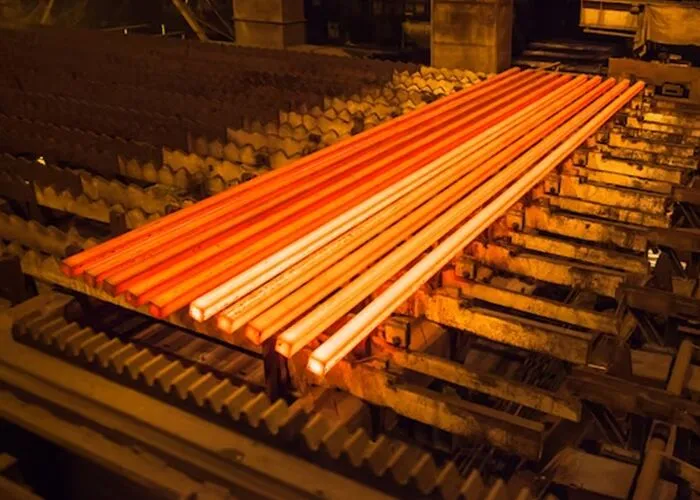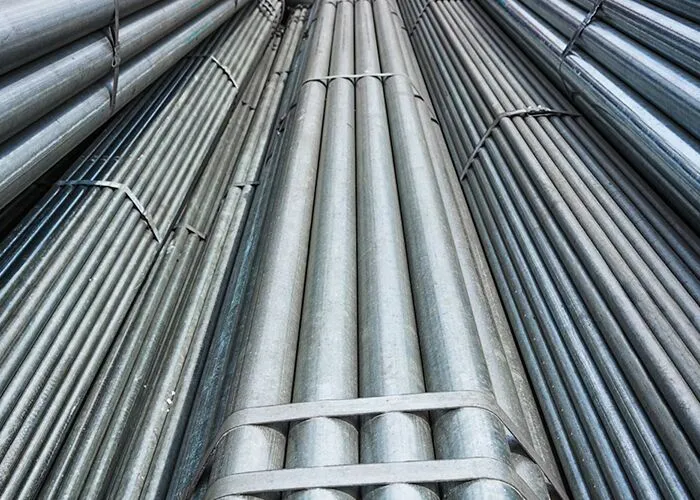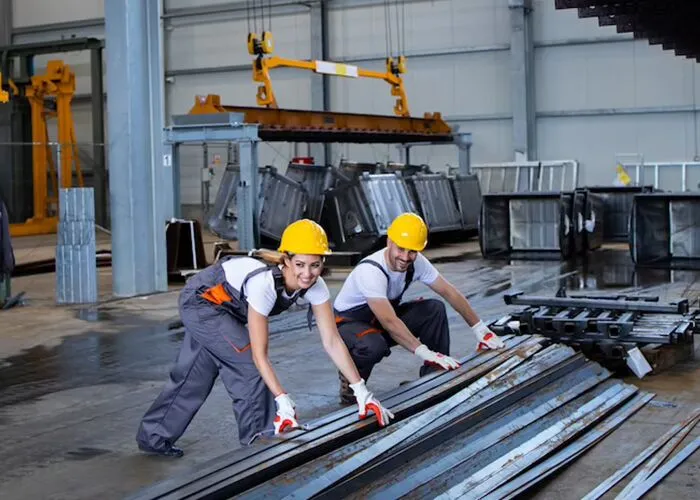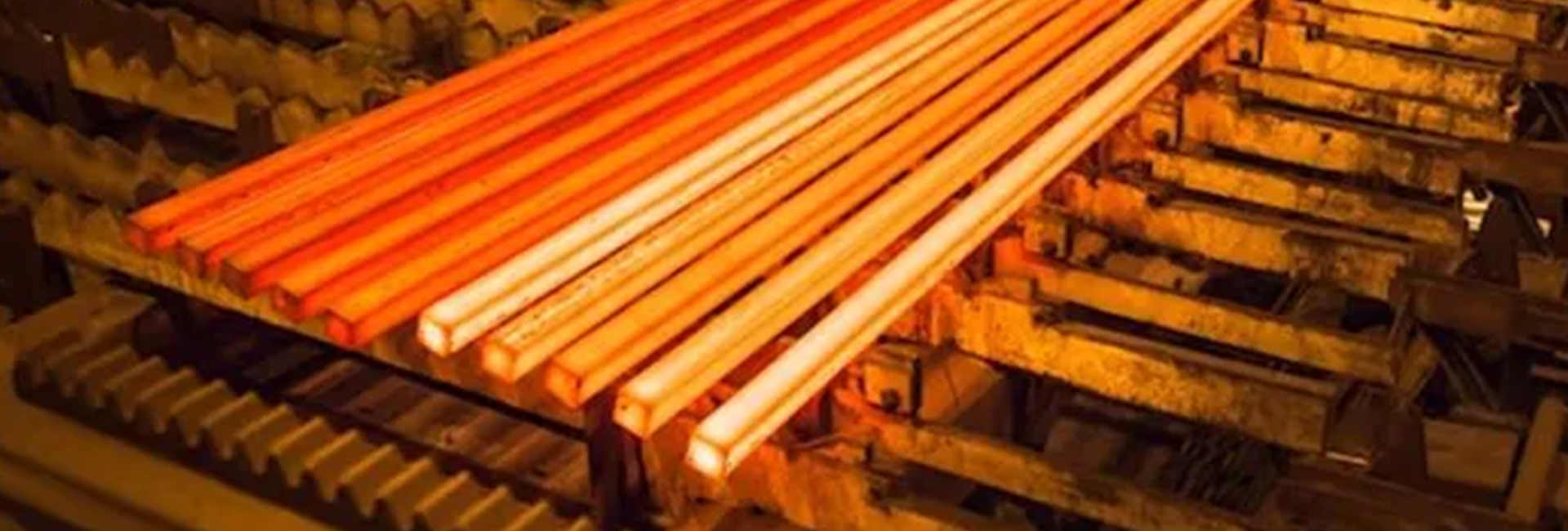Are you familiar with the term “steel billets” and how they differ from “steel bars“?
If not, don’t worry; you’re not alone. Many people may not be aware of these subtle but significant differences. However, understanding these differences is crucial if you’re in the manufacturing industry or a consumer of steel products.
Table of Content |
For example, have you ever wondered why some steel products are stronger than others? Or, have you ever encountered a situation where the steel product you purchased did not meet your expectations?
Perhaps you were expecting a steel bar but received a steel billet instead and didn’t know the difference. These scenarios can be frustrating and costly, highlighting the importance of knowing the distinctions between steel billets and steel bars.
In this blog post, we’ll dive deeper into the world of steel manufacturing to explore the differences between steel billets and steel bars. We’ll discuss the composition, size, and manufacturing processes of both steel products, as well as their respective strengths and uses.
By the end of this blog, you’ll have a better understanding of these critical components of steel manufacturing, and you’ll be better equipped to make informed decisions when purchasing or manufacturing steel products. So, let’s get started!
Steel Billets
Steel billets are a semi-finished product used in steel production. They are created through a process of casting molten steel into a rectangular or square shape, which is then allowed to cool and solidify. This results in a solid, bar-shaped piece of steel that is suitable for further processing.
Common Steel Billet Sizes and Shapes
Steel billets come in various sizes and shapes, depending on their intended use.
- The most common sizes range from 100mm x 100mm to 130mm x 130mm, with lengths varying from 6 to 12 meters.
- Some billets may be rectangular or even hexagonal, but most are square-shaped.
The Steel Billet sizes and shapes play a significant role in determining the final product’s strength, durability, and other properties.
Steel Billets Uses in Manufacturing

Steel billets are a critical component in the manufacturing of a variety of steel products, such as bars, wire, and tubes.
- They are also used in the production of forged steel products, including gears, crankshafts, and connecting rods.
- Steel billets are particularly useful in the construction industry, where they are used to produce steel reinforcement bars (rebar) that are used in concrete structures such as buildings, bridges, and roads.
- In addition to their use in construction and manufacturing, steel billets also have applications in the energy and automotive industries.
- They can be used to produce parts for engines, transmissions, and other mechanical systems, as well as components for wind turbines and other renewable energy systems.
Steel Bars
Steel bars are a finished steel product that has been rolled or drawn to a specific shape and size. Unlike steel billets, which are semi-finished products, steel bars are ready for use in a wide range of applications.
Steel bars can be made from different grades of steel, each with its unique properties. The manufacturing process involves heating the steel to a specific temperature and then rolling or drawing it through a series of rollers or dies to achieve the desired shape and size.
Common Steel Bar Shapes and Sizes

Steel bars come in various shapes and sizes, depending on their intended use.
- The most common shapes are round, square, and rectangular. Round bars are available in sizes ranging from 6mm to 600mm in diameter, while square and rectangular bars range from 10mm x 10mm to 200mm x 200mm in size.
- The size and shape of a steel bar play a crucial role in determining its strength, durability, and other properties.
Manufacturers choose specific bar sizes and shapes based on the requirements of the final product.
Read more: TMT Bars Length and Weight Chart Complete Overview
Uses of Steel Bars in Manufacturing
Steel bars are used in a wide range of applications, including construction, manufacturing, and automotive industries.
- They are used to make a variety of products, including bolts, nuts, screws, gears, and axles.
- In the construction industry, steel bars are used as reinforcement for concrete structures such as buildings, bridges, and roads.
- They are also used in the production of steel wire, which is used to make fences, mesh, and other construction materials.
- In the manufacturing industry, steel bars are used to make a variety of machine parts, including bearings, shafts, and hydraulic cylinders.
- Steel bars are also used to make hand tools, such as hammers and wrenches, and industrial equipment, such as pumps and compressors.
- In the automotive industry, steel bars are used to make parts for engines, transmissions, and suspensions. They are also used in the production of chassis components, such as axles and sway bars.
Read more: Different Usage of TMT Bars
Differences between Steel Bars and Steel Billets
Steel bars and steel billets are both essential components in the manufacturing industry, but they have some fundamental differences.
In this section, we will explore the differences between steel bars and steel billets in terms of their composition, manufacturing processes, and strength and durability.
Composition Differences between Steel Bars and Steel Billets
Steel bars and steel billets differ in their composition.
- Steel billets are semi-finished products that are typically larger than steel bars. They are made from molten steel and are shaped into a square or rectangular cross-section through casting.
- Steel bars, on the other hand, are finished products that have been rolled or drawn into a specific shape and size.
- The composition of steel billets is usually more uniform than that of steel bars. This is because steel billets undergo fewer manufacturing processes, which means that there is less opportunity for variations in composition to occur.
- Steel bars, on the other hand, can have variations in their composition due to the different manufacturing processes involved.
Manufacturing Processes for Steel Bars and Steel Billets
The manufacturing processes for steel bars and steel billets are quite different.
- Steel billets are produced through a casting process, where molten steel is poured into a mold and allowed to cool and solidify. Once the billet has cooled, it is reheated and then rolled into its final shape.
- Steel bars, on the other hand, are made by heating the steel to a specific temperature and then rolling or drawing it through a series of rollers or dies to achieve the desired shape and size. The manufacturing process for steel bars involves more steps than the process for steel billets.
Strength and Durability Differences between Steel Bars and Steel Billets
Steel bars are generally stronger and more durable than steel billets. This is because the manufacturing process for steel bars involves more steps, which means that they undergo more heat treatment and mechanical work. This makes them more resistant to fatigue and wear and tear.
Steel billets, on the other hand, have lower strength and durability than steel bars. This is because they are semi-finished products and are not yet fully processed. The strength and durability of steel billets depend on the final product they are used to manufacture.
Bloom and Billet Metal

Bloom metal is a semi-finished steel product that is typically square or rectangular in shape. It is produced through a process called blooming, where a large ingot of steel is heated and then rolled into a bloom. The size of the bloom can vary, but it is typically larger than a billet.
Billet metal is a semi-finished steel product that is typically smaller than a bloom. It is also produced through a casting process, where molten steel is poured into a mold and then allowed to cool and solidify.
The Role of Bloom and Billet Metal in the Steel Production Process
Bloom and billet metal play a crucial role in the steel production process. They are both used as starting materials for the production of finished steel products, such as bars, sheets, and plates.
The size and shape of the bloom and billet metal used depends on the final product that is being produced. For example, if a large steel plate is being produced, a larger bloom or billet metal may be used. If a smaller steel bar is being produced, a smaller billet may be used.
Wrapping It Up
Steel bars and steel billets are both crucial components of the manufacturing industry, each with its unique characteristics and uses. While they may seem similar at first glance, their differences in composition, manufacturing processes, and strength and durability make them suitable for different applications.
At Sree Metaliks Limited, we understand the importance of using high-quality materials in manufacturing. That’s why we are committed to providing our clients with the best possible steel products, including steel bars and steel billets. Our state-of-the-art facilities and experienced team ensure that our products meet the highest standards of quality and reliability.
Whether you need steel bars or steel billets for your next manufacturing project, you can trust Sree Metaliks Limited to provide you with the right materials for the job. Contact us today to learn more about our products and services and how we can help take your business to the next level.

